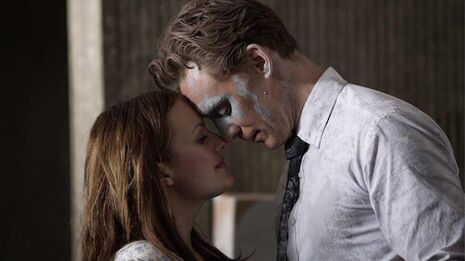Film: High Rise
Kate Wilson reviews the blockbuster masterpiece

Towering above its blockbuster competitors, Ben Wheatley’s High-Rise is a cinematic masterpiece. Blending dark humour with a deep satire of the British class system, Wheatley brands J.G. Ballard’s notorious novel with his distinctive psychedelic stamp. Brutalism is key to the film. Claustrophobically trapped within a concrete high-rise apartment block, the tower’s soulless architecture provides the foundation for a stratified society slowly descending into anarchy.
Despite its star-studded cast – Jeremy Irons, Sienna Miller and Tom Hiddleston – the film is not about the people, it’s about the building. A pillar of Ballard’s Concrete and Steel trilogy of novels, the book is celebrated for its “psychogeographic” bent: a focus on the relation between place and person. With a visual nod to Stanley Kubrick’s A Clockwork Orange, Wheatley perfectly translates this seminal theme onscreen, crafting a distinct identity for each individual through their relation to the tower.
Jeremy Irons is exceptional as the building’s architect, Anthony Royal, who lives an elite existence in a farcically lavish penthouse with his wife and horse. After breathing life into the high-rise, Irons’s submissiveness is chilling as the building exercises an autonomy beyond his control. As the tower lights flicker and garbage cans pile up in half-illuminated stairwells, the crumbling infrastructure mirrors the building’s decline into chaos. Rape and torture become commonplace. The community withdraws into what Ballard coins the “archaeopsychic” – the impulses buried deep inside the mind that are revealed as layers of civilisation are peeled away.
Reduced to its primitive origins, the anarchic community is driven by urges and orgies. Amy Jump’s snappy script anchors this disorder, deftly capturing the building’s descent into a dog-eat-dog – and famously dog-eating – world.
Irons’s character spends much of his time poring over architectural plans, trying to work out, as he puts it, “where he went wrong”. But he misses the point: the movie is not about right or wrong. Morals are suspended in the high-rise space, and the tower instead presents a different binary – up or down. The characters are engaged in a game of snakes and ladders: in constant competition, some emerge as social climbers, and others slide down to the lowest level.
The film follows Dr Robert Laing (Tom Hiddleston) as he navigates the building’s social jungle. The ‘middleman’ in every sense of the word, Hiddleston expertly portrays an indifferent observer: a guest of both the grotesque baroque revelries at the top and the screaming children’s pool parties at the bottom. Hiddleston is unsettling in his self-sufficiency, relying on nobody. Immune to the erupting violence, his character refuses to play by the rules, fraternising sexually and socially with those above and below him. With his apathy towards community rankings, Hiddleston’s Laing ultimately emerges as the victor of the building. Royal may be the architect, but with a sly wink to Battle Royale, it is Laing who finally makes it to the top.
Wheatley’s ultra-violent adaptation ticks all the boxes. Its impishly demented comment on contemporary civilisation is a darkly hilarious Lord of the Flies for our modern city. A project branded ‘unfilmable’ and stalled for decades, Jeremy Thomas’s slick production skilfully moors the chaos of a class system teetering over the edge of psychosis. High-Rise is a multistorey masterpiece – a film that works quite literally on a variety of levels, it is undoubtedly destined to become a cult classic.
 Interviews / You don’t need to peak at Cambridge, says Robin Harding31 December 2025
Interviews / You don’t need to peak at Cambridge, says Robin Harding31 December 2025 News / Unions protest handling of redundancies at Epidemiology Unit30 December 2025
News / Unions protest handling of redundancies at Epidemiology Unit30 December 2025 Comment / What happened to men at Cambridge?31 December 2025
Comment / What happened to men at Cambridge?31 December 2025 Features / ‘Treated like we’re incompetent’: ents officers on college micromanagement30 December 2025
Features / ‘Treated like we’re incompetent’: ents officers on college micromanagement30 December 2025 Theatre / We should be filming ADC productions31 December 2025
Theatre / We should be filming ADC productions31 December 2025







